A well-designed mailbox flower bed enhances curb appeal, making a lasting impression while adding charm to your outdoor space. Thoughtfully arranged flowers, plants, and decorative elements can turn an ordinary mailbox area into a vibrant focal point. Whether aiming for a low-maintenance garden or a seasonal floral display, the right combination of greenery and color boosts visual interest while complementing the home’s exterior. With creative ideas tailored to different landscapes and styles, achieving a stunning mailbox flower bed is easier than ever. This guide provides expert inspiration to help maximize the beauty of this often-overlooked space with practical and stylish solutions.
Circular Stone Border
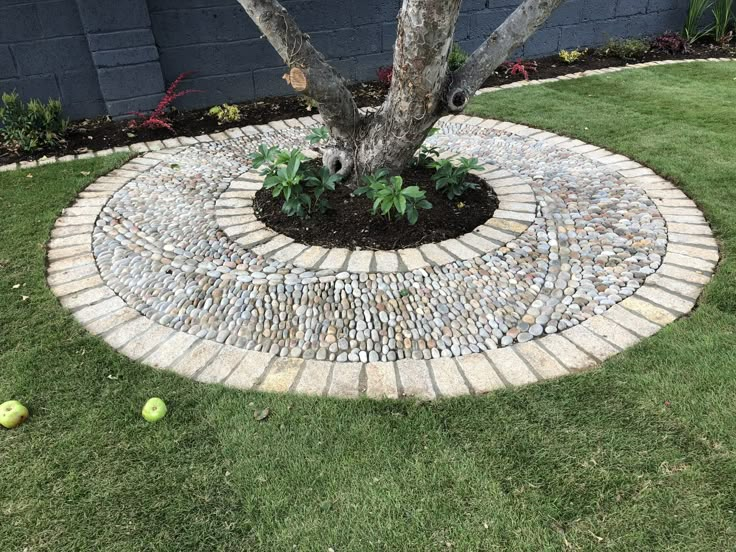
Defining a mailbox flower bed with a circular stone border provides a structured yet natural aesthetic. Using stacked or neatly arranged stones, this design creates a distinct separation between the flower bed and the surrounding landscape. Durable materials such as limestone, granite, or river rocks not only enhance the bed’s appeal but also prevent soil erosion. Selecting stones that complement the home’s exterior ensures seamless visual integration. Native perennials, ornamental grasses, or seasonal blooms thrive within the bordered space, offering continuous color and texture throughout the year. Layering plants based on height—from taller varieties in the center to shorter ones along the edge—enhances the depth of the arrangement. A well-maintained stone border reduces weed invasion while providing a defined space for mulch or decorative gravel. Proper placement ensures drainage efficiency, preventing water buildup that could harm plant roots. Over time, this timeless approach maintains its charm with minimal upkeep.
Vertical Planter Attachment
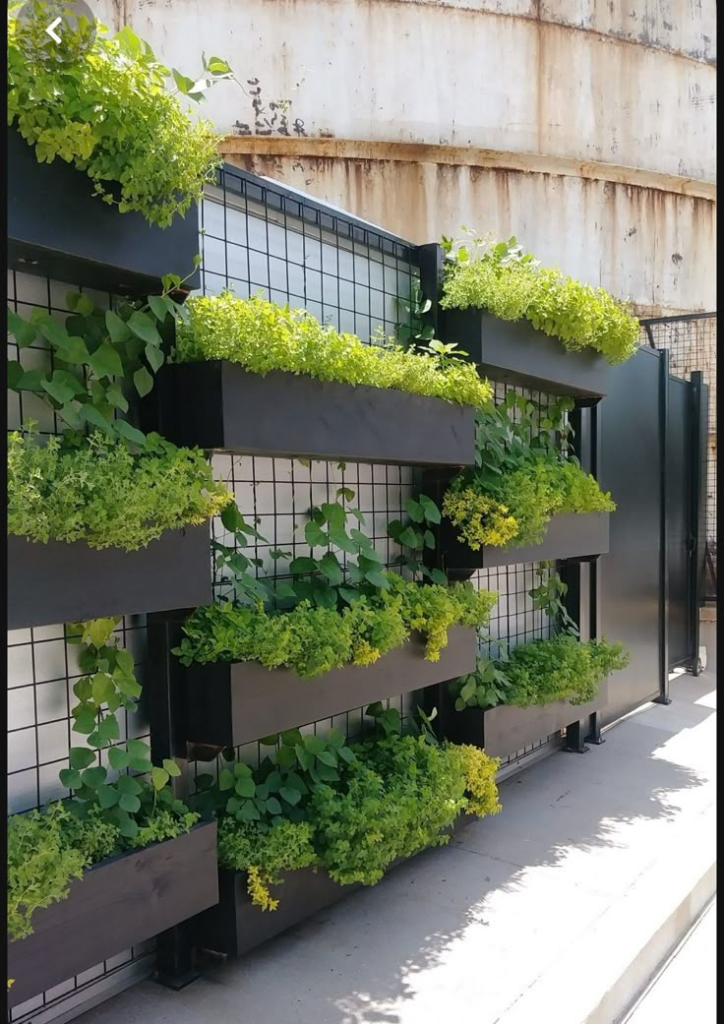
Maximizing limited space near the mailbox is achievable with a vertical planter attachment. This method introduces a multi-tiered floral display, bringing vibrancy to an otherwise plain structure. Attachable planters, crafted from wood, metal, or durable plastic, provide ample room for trailing flowers like petunias, calibrachoas, or ivy. The vertical arrangement allows for diverse plant combinations, integrating color and texture effortlessly. Using self-watering planters or moisture-retaining soil minimizes maintenance while ensuring healthy growth. Climbing plants such as morning glories or clematis can wrap around the mailbox post, adding natural elegance. Seasonal rotations keep the display fresh year-round, accommodating vibrant summer blooms or winter-friendly greenery. Choosing UV-resistant planters extends durability, preventing wear from harsh weather conditions. Regular trimming and watering maintain the lush appeal, ensuring the mailbox remains a captivating focal point. This space-saving approach enhances curb appeal while embracing functional yet artistic landscaping solutions.
Seasonal Flower Rotation
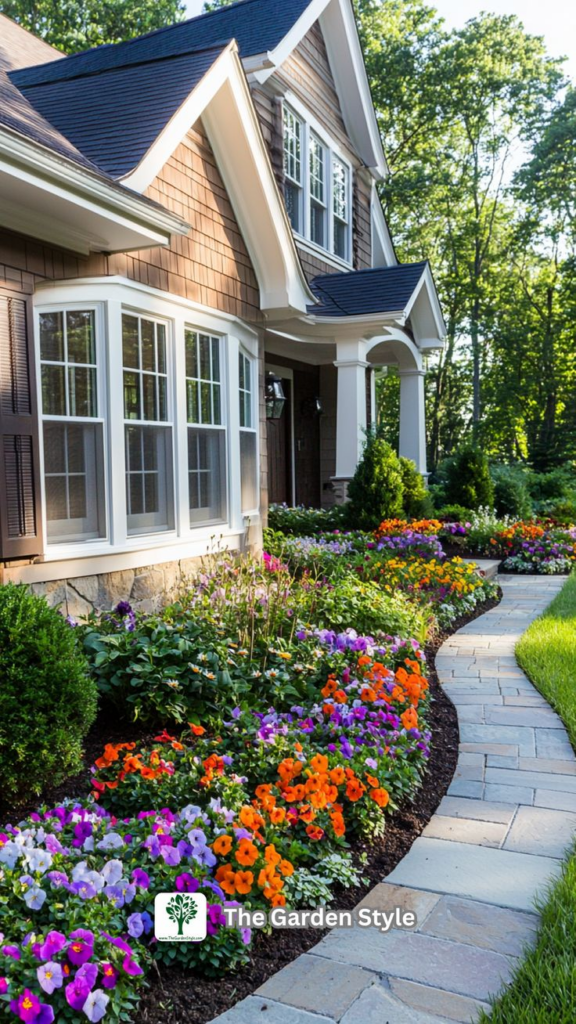
Keeping a mailbox flower bed vibrant throughout the year is achievable with seasonal flower rotation. This approach ensures continuous blooms, adapting to temperature shifts and climate variations. Spring introduces tulips, daffodils, and hyacinths, while summer welcomes heat-tolerant marigolds, petunias, and zinnias. As autumn approaches, chrysanthemums, ornamental kale, and pansies provide rich hues, maintaining visual interest. In colder months, evergreen shrubs, winter-blooming hellebores, or decorative cabbages keep the space lively. Soil enrichment with compost before each seasonal transition enhances plant health, encouraging lush growth. Grouping flowers based on bloom cycles prevents gaps in color, creating a seamless floral display. Drip irrigation systems or mulch layers help retain moisture, reducing upkeep. Adjusting fertilizer applications according to plant needs further supports long-lasting vibrancy. This thoughtful rotation strategy ensures an eye-catching mailbox flower bed that evolves beautifully with each passing season.
Mulched Perennial Bed
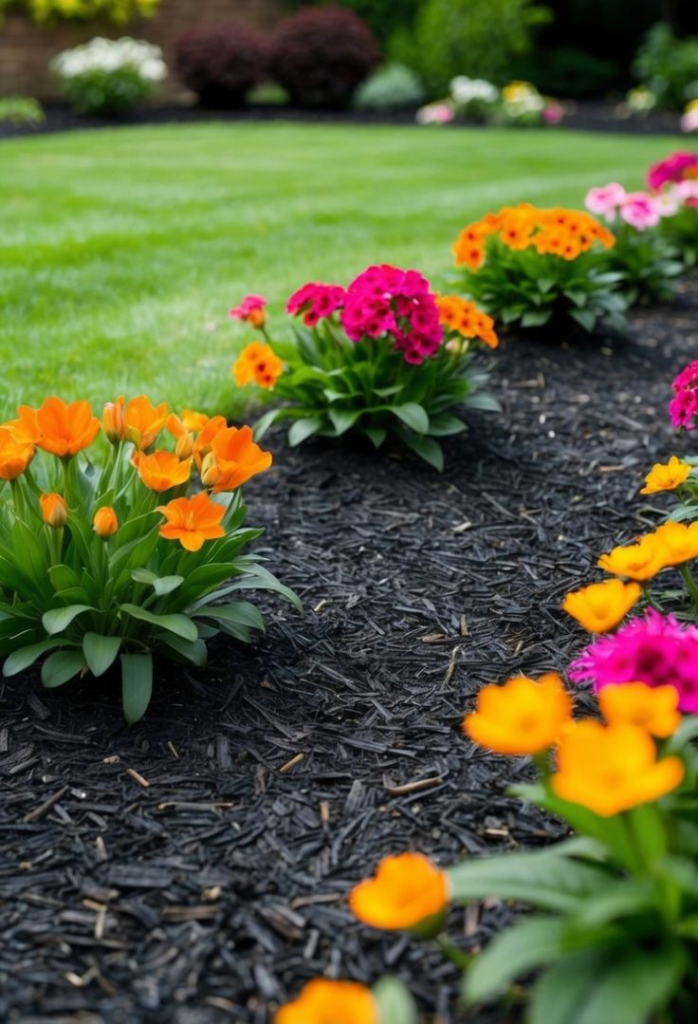
Establishing a low-maintenance yet visually appealing mailbox flower bed is possible with a mulched perennial arrangement. Perennials return year after year, reducing the need for replanting while creating a stable landscape feature. Popular choices such as daylilies, black-eyed Susans, and coneflowers thrive with minimal care, offering bursts of seasonal color. A well-spread mulch layer conserves soil moisture, suppresses weeds, and enhances overall plant health. Organic options like shredded bark or pine straw gradually enrich the soil as they decompose. Arranging perennials in clusters ensures a cohesive, balanced appearance, with taller varieties placed toward the back and shorter ones near the edges. Choosing native species supports pollinators while requiring less water and fertilizer. Refreshing mulch annually maintains its effectiveness, preventing erosion and improving soil structure. This enduring setup provides year-round beauty while requiring significantly less maintenance compared to traditional flower beds.
Rock Garden Accents

Incorporating rock garden accents around a mailbox flower bed introduces texture, durability, and low-maintenance appeal. Using decorative stones, pebbles, or boulders provides contrast against vibrant plantings while enhancing drainage. Succulents, sedum, and drought-resistant perennials like lavender and Russian sage thrive in rocky environments, creating a sustainable and visually striking composition. Arranging rocks of varying sizes adds depth, while gravel pathways or stepping stones offer functional beauty. Choosing natural stone materials that complement the mailbox and home exterior ensures a cohesive design. Positioning larger rocks as focal points prevents soil erosion while adding sculptural interest. Decorative edging with small pebbles or crushed granite defines the bed, reducing the spread of weeds. Regular maintenance includes occasional repositioning and debris removal to maintain a neat appearance. This approach transforms an ordinary mailbox setting into an artistic, drought-tolerant landscape that thrives year-round.
Mailbox Planter Box

Utilizing a mailbox planter box introduces a charming, space-efficient way to enhance curb appeal. A well-constructed wooden, metal, or plastic box offers a contained space for vibrant seasonal blooms or cascading greenery. Attaching a planter directly beneath the mailbox or securing a freestanding version near the post allows for versatile design options. Flowering annuals such as petunias, begonias, and impatiens provide bursts of color, while trailing vines like sweet potato vine or creeping Jenny soften edges. Selecting weather-resistant materials ensures durability, protecting against harsh elements. A self-watering insert or moisture-retaining soil mix minimizes frequent watering needs, supporting consistent plant health. Positioning the planter box for optimal sunlight exposure encourages lush growth. Refreshing plant choices seasonally ensures year-round visual interest. This compact yet striking addition transforms the mailbox into an inviting, decorative focal point with minimal upkeep.
Climbing Vines

Introducing climbing vines around the mailbox post establishes a natural, elegant display that matures beautifully over time. Flowering climbers like clematis, morning glories, or climbing roses provide striking vertical interest while enhancing the post’s visual appeal. Fast-growing options such as honeysuckle and jasmine offer fragrant blooms that attract pollinators, adding ecological benefits to the garden space. Supporting structures like trellises, wire grids, or simple ties guide growth, preventing excessive tangling. Choosing perennial varieties ensures long-lasting coverage without annual replanting. Proper pruning maintains a tidy appearance while encouraging healthy blooming cycles. Incorporating mulch at the base conserves moisture, promoting steady growth throughout changing seasons. For added charm, pairing climbing vines with complementary ground-cover plants creates a layered, dynamic mailbox garden. This approach elevates curb appeal while requiring minimal maintenance, making it a practical yet aesthetically rewarding choice.
Miniature Shrubs
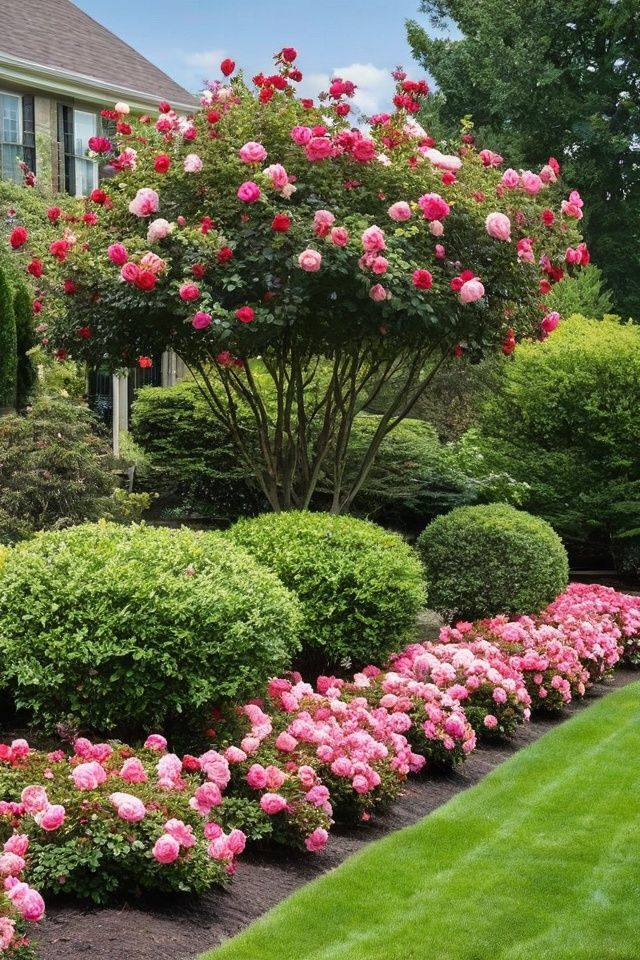
Selecting miniature shrubs for a mailbox flower bed introduces lasting greenery with structured, low-maintenance appeal. Compact varieties such as dwarf boxwood, azaleas, or hydrangeas provide year-round texture and seasonal color changes. These small-scale shrubs establish a balanced backdrop for flowering plants while offering reliable foliage in winter months. Positioning taller shrubs towards the rear and smaller selections near the front ensures a proportional, layered design. Choosing slow-growing, drought-resistant species minimizes upkeep while maintaining an elegant aesthetic. Mulching around the shrubs retains soil moisture and suppresses weeds, enhancing plant health. Periodic trimming maintains a clean, polished look, preventing overgrowth from obstructing mailbox access. Blending evergreen and deciduous varieties ensures continuous visual interest throughout changing seasons. This structured yet dynamic arrangement transforms the mailbox area into a well-defined, visually engaging focal point with long-term sustainability.
Wildflower Patch
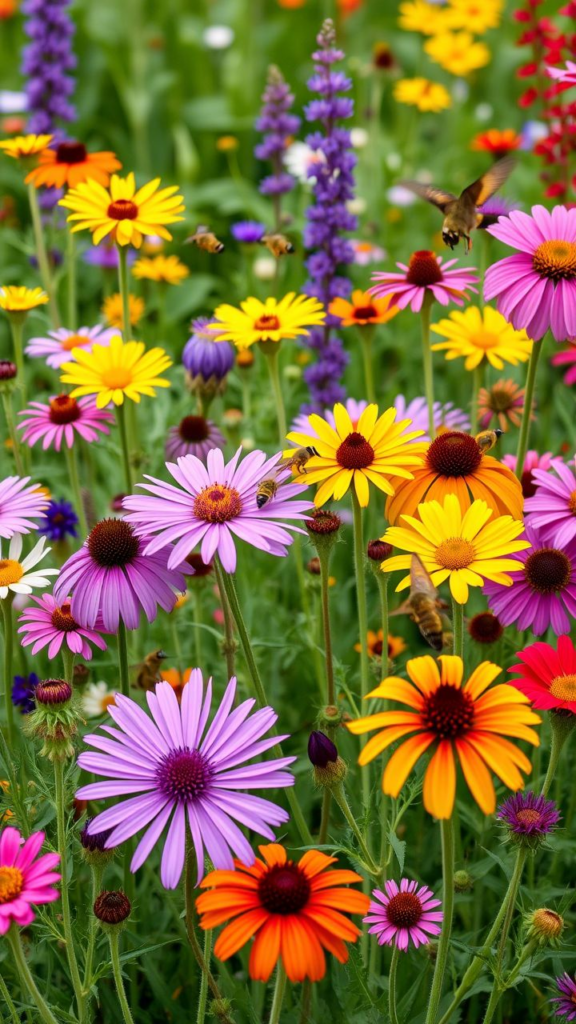
Establishing a wildflower patch around the mailbox creates a vibrant, pollinator-friendly landscape with minimal maintenance. Native wildflowers such as black-eyed Susans, coneflowers, and coreopsis thrive in diverse climates, providing bursts of seasonal color. A mix of perennial and annual blooms ensures continuous variation, maintaining interest throughout the year. Sowing seeds directly into well-prepared soil allows for natural spreading and self-seeding over time. Selecting drought-resistant species reduces watering requirements, making this option both sustainable and visually appealing. Pairing wildflowers with ornamental grasses adds height variation, enhancing textural contrast. Strategic placement of stepping stones or gravel paths prevents trampling while preserving the natural beauty of the space. This eco-friendly approach supports local biodiversity by attracting butterflies, bees, and birds. Once established, a wildflower patch flourishes with minimal intervention, offering a rustic, picturesque addition to the mailbox landscape.
Herb Garden
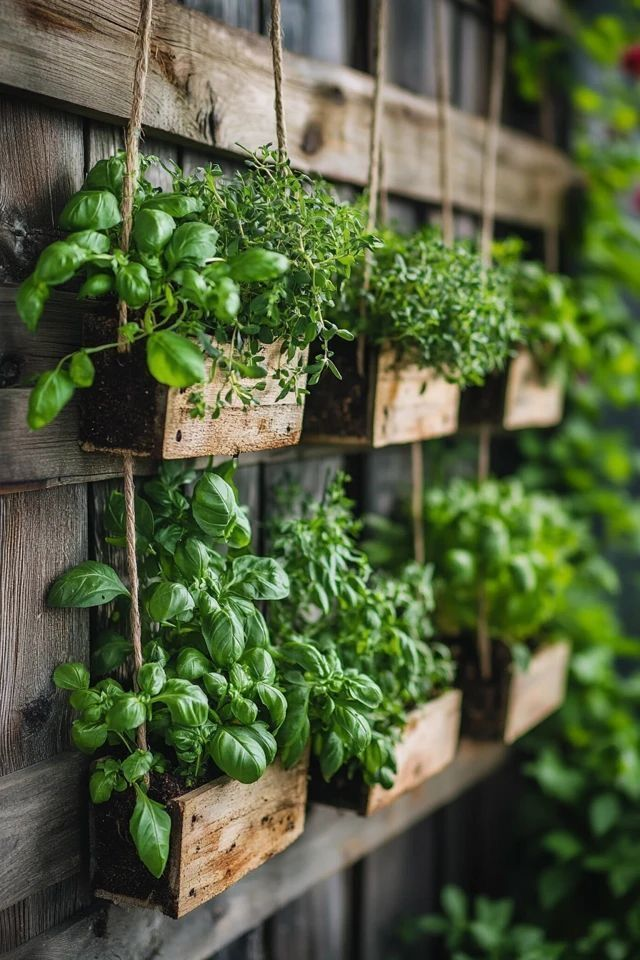
Transforming the mailbox flower bed into an herb garden combines functionality with ornamental appeal. Culinary favorites such as rosemary, thyme, and basil thrive in well-draining soil, offering fragrant foliage and fresh flavors for home cooking. Mixing flowering herbs like lavender and chives enhances the visual appeal while attracting pollinators. Compact raised beds or bordered sections help maintain organization, ensuring easy access for harvesting. Using gravel or mulch between plantings conserves moisture while reducing weed growth. Positioning sun-loving herbs at the forefront optimizes exposure, encouraging robust development. Periodic pruning promotes regrowth, maintaining a lush and tidy appearance. Incorporating a variety of textures and colors—from silvery sage to deep green oregano—creates an eye-catching, practical arrangement. This dual-purpose design enhances the mailbox area with aromatic beauty while providing a convenient source of fresh herbs throughout the growing season.
Succulent Arrangement
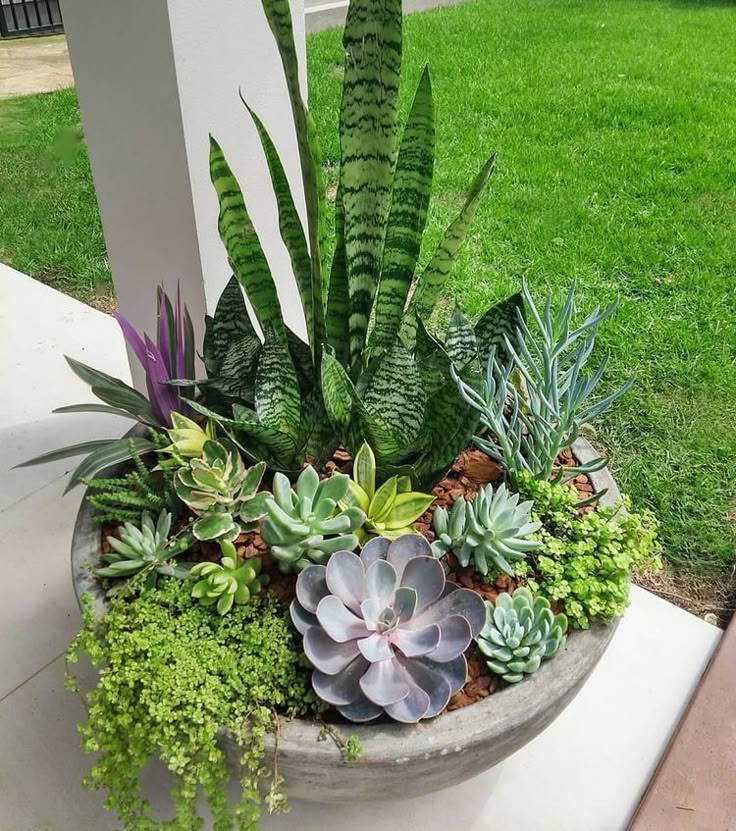
Curating a succulent arrangement around the mailbox offers a low-maintenance yet striking visual impact. Heat-tolerant varieties such as echeveria, sedum, and agave thrive in well-draining soil, requiring minimal watering. Grouping succulents with varying shapes, sizes, and colors enhances depth and contrast, creating a sculptural, modern aesthetic. Incorporating decorative gravel or crushed stone around plantings improves drainage while accentuating the unique textures. Opting for container arrangements allows flexibility, making seasonal adjustments easy while protecting plants from harsh conditions. Positioning taller succulents centrally with cascading varieties along the edges establishes a balanced display. Using terracotta or stone planters ensures breathability, promoting root health. Regular removal of dead leaves maintains a clean, polished look. This drought-tolerant approach transforms the mailbox area into a resilient, visually engaging feature that thrives in diverse climates with minimal upkeep.
Butterfly Garden
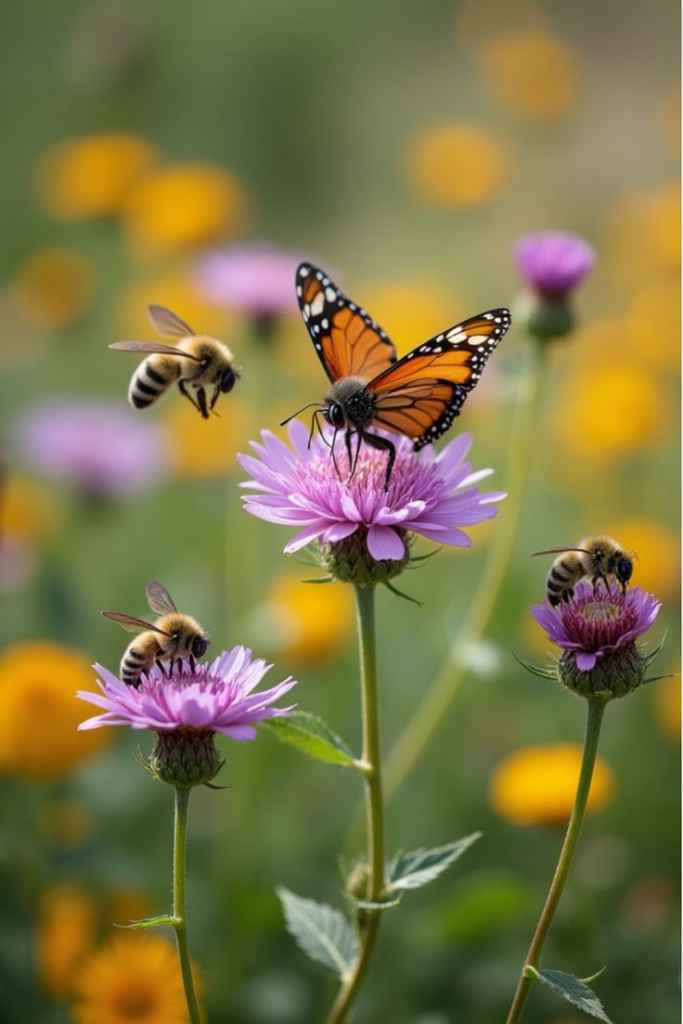
Creating a butterfly garden around the mailbox fosters a vibrant, eco-friendly space teeming with pollinator activity. Selecting nectar-rich flowers such as milkweed, lantana, and butterfly bush attracts a variety of butterflies while supporting their lifecycle. Grouping plants in clusters maximizes visibility and accessibility for pollinators, enhancing biodiversity. Adding host plants like parsley or fennel encourages caterpillar development, ensuring sustained butterfly populations. Positioning flowers in sunny areas optimizes blooming potential, creating a warm, inviting habitat. Avoiding chemical pesticides preserves the natural ecosystem, promoting a healthy environment. Integrating flat stones provides resting spots, while a small water source supports hydration. Regular pruning and deadheading prolong blooming cycles, maintaining continuous color throughout the seasons. This intentional design transforms the mailbox setting into a captivating, wildlife-friendly garden that enriches the landscape while promoting pollinator conservation.
Edging with Annuals

Defining the mailbox flower bed with a border of annuals introduces vibrant color and structured appeal. Fast-growing blooms such as petunias, impatiens, and marigolds create a lively perimeter that enhances the surrounding landscape. Choosing compact, uniform varieties ensures a neat, consistent edge while preventing overgrowth. Layering different shades and textures adds visual interest, complementing taller centerpiece plants within the bed. Regular deadheading prolongs flowering periods, keeping the display fresh throughout the season. Incorporating organic mulch between plants retains soil moisture and reduces weed invasion, supporting healthy growth. Strategically alternating colors creates a striking contrast, drawing attention to the mailbox area. Seasonal rotations allow for new color schemes, keeping the landscape dynamic year-round. This approach provides an eye-catching yet manageable floral arrangement that effortlessly enhances curb appeal with minimal maintenance.
Themed Color Palette
Selecting a unified color scheme for the mailbox flower bed establishes a harmonious and visually appealing design. Coordinating hues such as pastel tones for a cottage-style look or bold reds and oranges for a striking contrast enhances aesthetic cohesion. Choosing flowers with complementary shades ensures a balanced display that blends naturally with the surrounding landscape. Repeating specific colors in different plant varieties strengthens the theme, creating a polished, intentional arrangement. Foliage with variegated or silver tones adds depth, breaking up monochromatic sections without overwhelming the composition. Adjusting seasonal blooms while maintaining the chosen palette keeps the design fresh throughout the year. Strategic placement of accent plants reinforces the theme, making the mailbox a focal point. A well-executed color scheme transforms the area into a visually compelling feature that enhances curb appeal while showcasing artistic landscaping.
Decorative Mailbox Post Cover
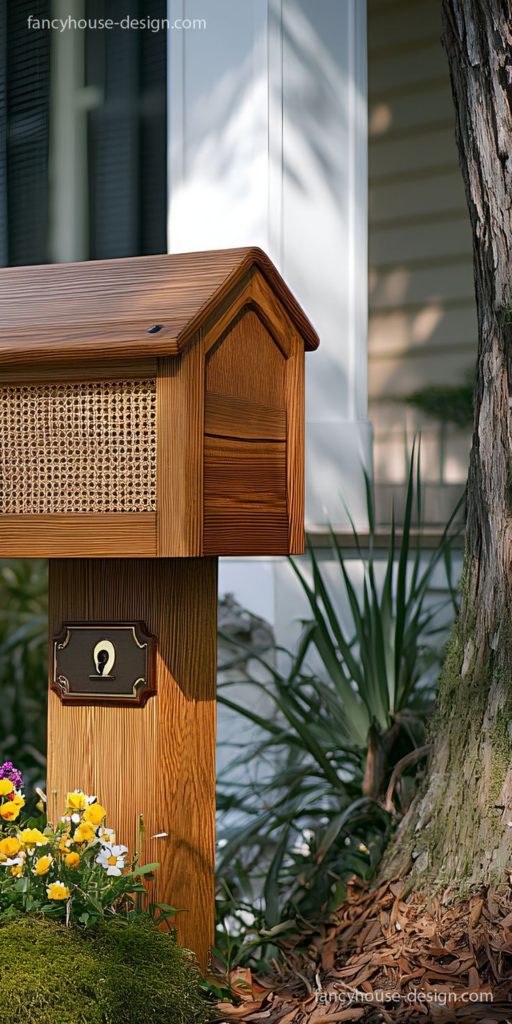
Enhancing the mailbox with a decorative post cover elevates its visual appeal while complementing the surrounding flower bed. Options such as lattice-style covers, wooden enclosures, or stone veneer wraps introduce texture and charm. Selecting weather-resistant materials ensures longevity, protecting the post from environmental wear. Integrating climbing plants like clematis or ivy softens harsh lines while adding natural beauty. Painting or staining wooden covers in coordinating tones ties the mailbox seamlessly into the landscape. Embellishments such as solar lanterns or metal address plaques add functional style, increasing nighttime visibility. A well-designed post cover enhances the overall mailbox presentation, transforming it into an elegant feature rather than a standard utility structure. Regular upkeep, including occasional repainting or sealing, preserves the material’s durability. This refined approach creates a visually engaging centerpiece, perfectly integrating the mailbox into the surrounding floral display.
